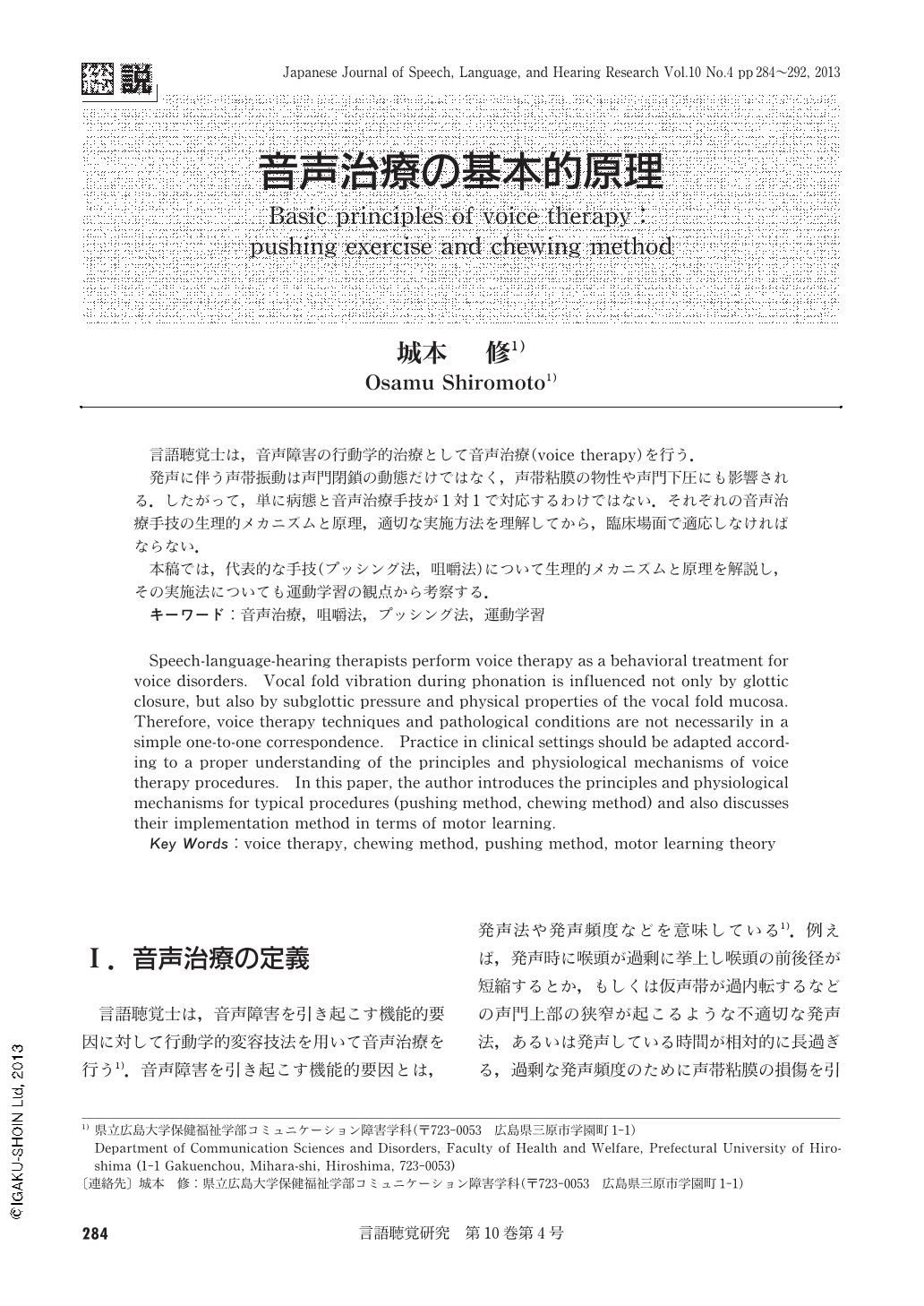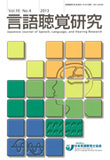Japanese
English
- 有料閲覧
- Abstract 文献概要
- 1ページ目 Look Inside
- 参考文献 Reference
言語聴覚士は,音声障害の行動学的治療として音声治療(voice therapy)を行う.
発声に伴う声帯振動は声門閉鎖の動態だけではなく,声帯粘膜の物性や声門下圧にも影響される.したがって,単に病態と音声治療手技が1対1で対応するわけではない.それぞれの音声治療手技の生理的メカニズムと原理,適切な実施方法を理解してから,臨床場面で適応しなければならない.
本稿では,代表的な手技(プッシング法,咀嚼法)について生理的メカニズムと原理を解説し,その実施法についても運動学習の観点から考察する.
Speech-language-hearing therapists perform voice therapy as a behavioral treatment for voice disorders. Vocal fold vibration during phonation is influenced not only by glottic closure, but also by subglottic pressure and physical properties of the vocal fold mucosa. Therefore, voice therapy techniques and pathological conditions are not necessarily in a simple one-to-one correspondence. Practice in clinical settings should be adapted according to a proper understanding of the principles and physiological mechanisms of voice therapy procedures. In this paper, the author introduces the principles and physiological mechanisms for typical procedures (pushing method, chewing method) and also discusses their implementation method in terms of motor learning.

Copyright © 2013, Japanese Association of Speech-Language-Hearing Therapists. All rights reserved.


